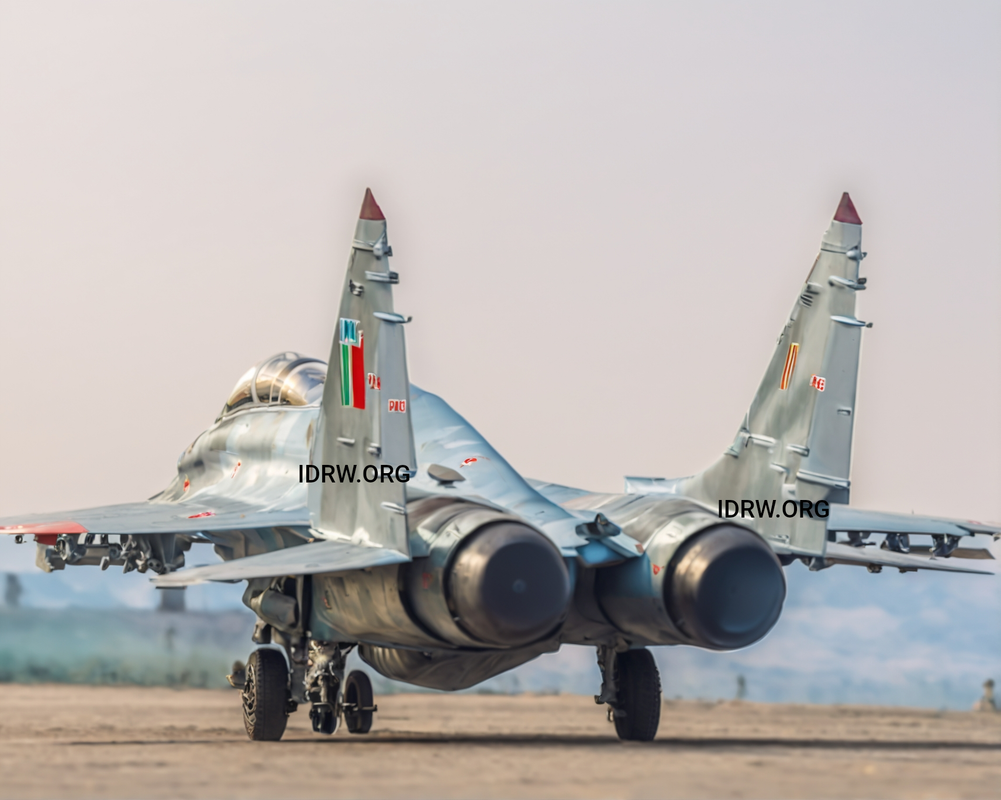SOURCE: RAUNAK KUNDE / NEWS BEAT / IDRW.ORG


In a significant development, the Indian Air Force (IAF) and the Gas Turbine Research Establishment (GTRE) are in advanced discussions to repurpose one of the IAF’s MiG-29UPG fighter jets as a Flying Test-Bed (FTB) for the Kaveri engine program. This move comes as the IAF aims to prolong the operational life of its MiG-29UPG fleet and support indigenous jet engine development.
Originally slated for retirement in 2027, the MiG-29UPG fleet will now remain in service for an additional eight years, extending its operational role within the IAF. However, one older MiG-29UPG will be dedicated to the Kaveri engine testing program, with plans to modify it for engine trials.
The decision to use the MiG-29UPG as a test platform marks a shift in IAF strategy. While earlier discussions considered using Light Combat Aircraft (LCA) Tejas prototypes, the IAF was cautious about employing single-engine fighter jets as flying test beds for an engine still under development. idrw.org had previously reported that the IAF was wary of using the older LSP (Limited Series Production) LCA-Tejas aircraft, given the inherent risks in engine trials.
The twin-engine MiG-29UPG, powered by RD-33 engines, offers greater safety and operational flexibility. In the event of an emergency, the aircraft can fly on one engine, making it a more reliable platform for testing a new and unproven engine like the Kaveri.
The Dry Kaveri engine, which has been under development by GTRE for several years, is designed to power future indigenous Unmanned fighter bomber jets. The latest iteration of the Kaveri engine, equipped with an afterburner, is expected to have smaller dimensions and a shorter length than the existing RD-33 engines on the MiG-29UPG.
This difference in size negates the need for modifications to the MiG-29UPG’s air intakes. However, as per idrw.org, minor modifications will be necessary to the aircraft’s rear fuselage, internal fuel lines, and other subsystems within the engine bay to accommodate the smaller Kaveri engine. These changes will ensure proper integration of the engine and facilitate accurate testing.
It is expected that the modification of the MiG-29UPG and the necessary integration work for the Kaveri engine will take approximately two years. Once modifications are complete, the aircraft will first undergo ground trials, followed by low- and high-speed taxi trials.
Extensive calibration will be required during this process. Since the MiG-29UPG will be operating with two different engines—the RD-33 and the Kaveri—the aircraft’s internal fuel piping, engine sensors, and other systems will need to be adjusted to ensure both engines function properly and do not interfere with each other.
Using the MiG-29UPG as a test platform for the Kaveri engine represents a significant opportunity for GTRE to fine-tune the engine in real-world conditions. If successful, this could accelerate the development of the Kaveri engine, enabling it to power future indigenous fighter jets, including advanced platforms like the Tejas Mk1A shortly with plans to develop a 90kN variant.
NOTE: Part-III of the Three-Part Series on Flying Test-Beds for the 110kN engine for AMCA and Kaveri Engine
NOTE : Article cannot be reproduced without written permission of idrw.org in any form even for YouTube Videos to avoid Copy right strikes. Websites doing illegal reproductions will get DMCA and Legal Notices.